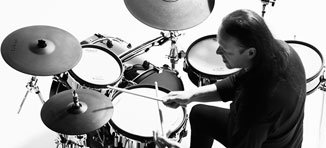There are BOSS fans, and then there are BOSS fans. Today, our blog takes a brief break from focusing on our usual guides and tutorials, and puts the spotlight onto the very awesome BOSS Pedal Project. If you haven’t checked it out yet, the BOSS Pedal Project is essentially exactly that – one man’s quest to hunt down every single BOSS pedal ever made! With fantastic Instagram eye candy, great video demos and live streams of hard-to-find vintage BOSS pedals, it’s gained quite a following – and for good reason!
Contributed by Ed Lim for the Roland Australia Blog
– Hi! Tell us about yourself.
My name is Cameron Johnson. I’m a guitarist/drummer living in Nashville, Tennessee. I play guitar in a progressive rock band called Atma Weapon. I am a guitar gear junkie and have a very soft spot in my heart for BOSS pedals. I also collect vintage Star Wars figures from the 70s/ 80s as well as retro video games, movies, etc.
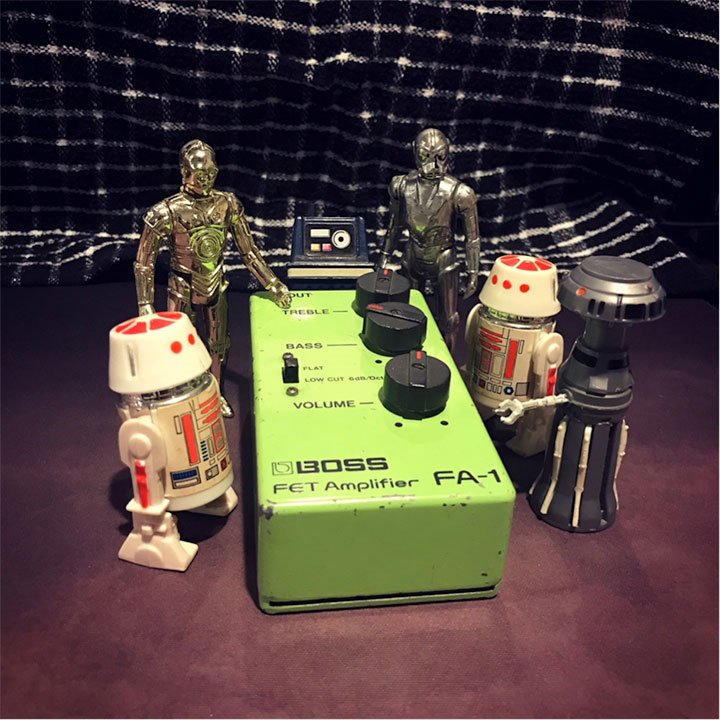
– When and how did the Boss Pedal Project start?
The seed for my BOSS obsession was planted when I first picked up the guitar in the mid 90s. As most guitarists did back then, I lusted over the guitar gear in Musician’s Friend catalogs. I was instantly drawn to the uniformity and beautiful colors of the BOSS compact pedal line, even before I tried one!
As an adult, I decided I wanted to track down some of the BOSS pedals I couldn’t afford as a kid. That morphed into me deciding to collect them all! My original plan was to do a video demo of every single BOSS compact pedal and upload them all to my Youtube channel. I got through about 70 videos, and got burnt out. So, I decided to take my passion to Instagram, and the BOSS Pedal Project was born.
– We love the photos that you do of BOSS pedals and old 80s toys! Where did you get the inspiration for that photo concept?
Thanks! That was a total fluke. I was running out of ideas posting regular pics, so I put an action figure next to a BOSS pedal, sort of combining two of my passions; vintage toys and BOSS. I figured there must be people like me who loved both, and I was right! I also love old video games, so I’ve done that combo as well. I’ll match them by color, or similar name, etc.
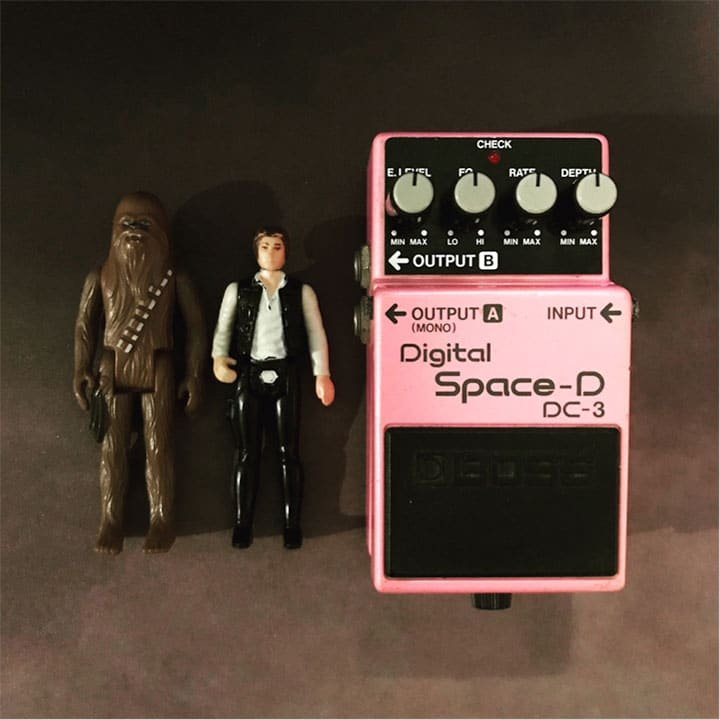
– What was your first BOSS pedal?
My first BOSS pedal was the TU-2 Tuner. I still have it, but I’m not sure if it’s the same one. At one point I had 4 or 5 TU-2 pedals, which is a little silly. That was at the height of my BOSS collecting obsession.
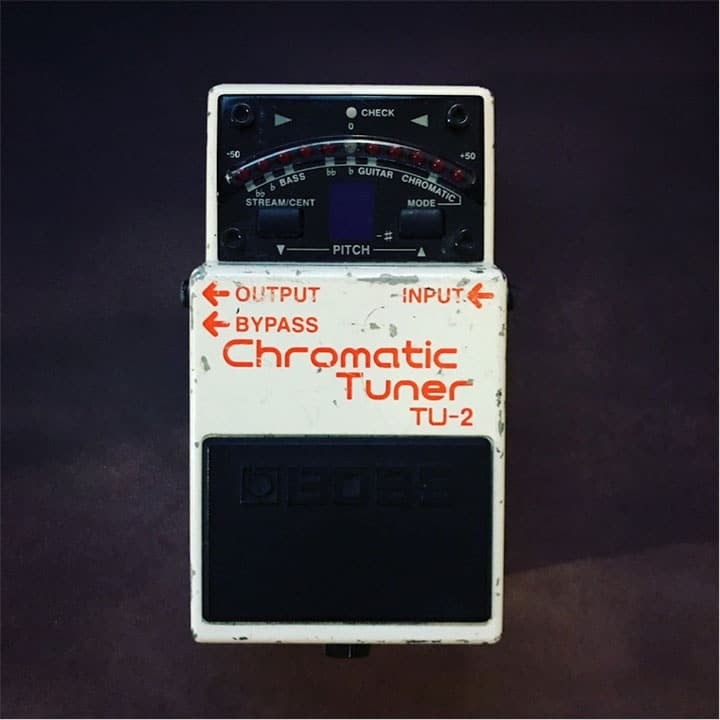
– How many BOSS pedals do you currently own?
Currently, I have right around 75 BOSS pedals. It’s not near the amount I used to have, but I’m very content with my collection. At one point, I probably had around 130. There are some new ones I’d like to get in the future, the Angry Driver being one of them. Now, I focus more on using the ones I have, rather than acquiring more.
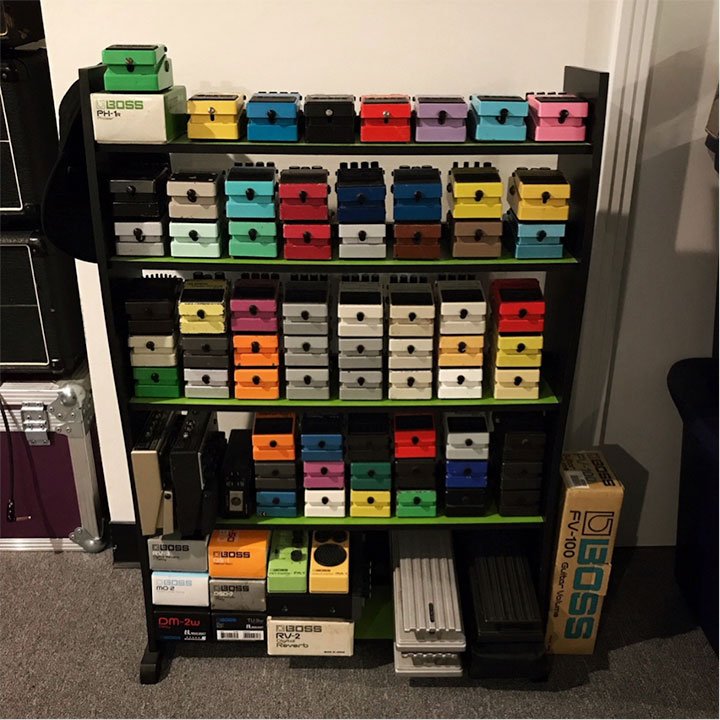
– What percentage complete is your collection?
Right now it’s about 50% complete; maybe a little more. At one point, I had the entire BOSS Compact pedal line, so right at 109 pedals (the full set at the time), plus duplicates of some. I even had two Slow Gears! That was a few years ago. I ended up having to sell a good portion to help fund my move to Nashville. But, I only sold the pedals I knew I could easily re-buy again, or ones I had multiples of. Since then, I’ve bought back some that I sold, and I’ve found some rare items that I didn’t have initially.
– What was the hardest pedal to find so far?
The SG-1 Slow Gear was probably the hardest, along with the original SP-1 Spectrum, and the first version of the OD-1. All in all, the Slow Gear was probably the hardest to track down. Although, I ended up getting a second Slow Gear in a stroke of luck for $60USD. (What a once in a lifetime bargain!! – Ed.) The seller thought it was broken. What he didn’t realize, was that some of the earliest BOSS pedals had a momentary LED that only came on when you depressed the footswitch. In other words, it didn’t stay on, but just indicated when you either turned the pedal on or off. That’s a cool bit of BOSS history.
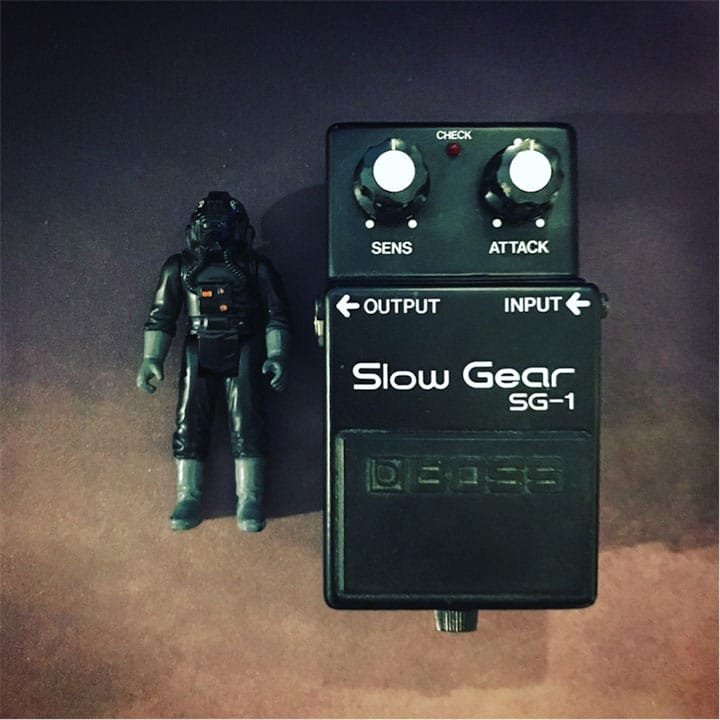
– Which pedal is your favourite and why?
My favorite BOSS pedal is the DSD-2 Digital Sampler/ Delay. Although, I just use it as a delay pedal, and don’t use the sampler function. The early BOSS digital delays had a special 12-bit chip in them that don’t sound like anything else. I have amassed probably 10 or so of the DSD-2’s. I’m a little obsessed. That’s the only BOSS pedal I currently hoard. People haven’t really caught on to them being special. They are just as good as the DD-2’s, which people value more.
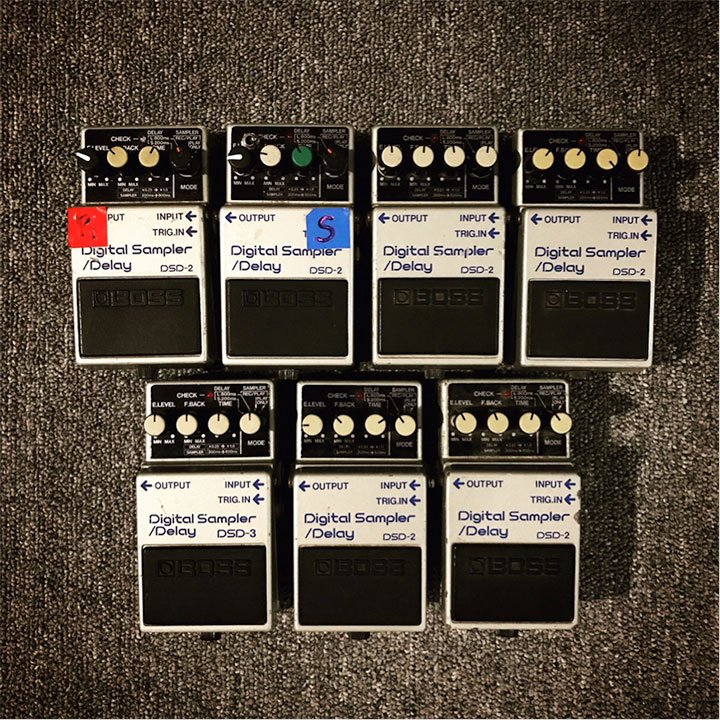
– What are the top 3 pedals that you’re still chasing?
I’m always on the lookout for more DSD-2’s, and maybe another FA-1 FET amp. The FA-1 is a piece I was after for a while. Other than that, I’d love to get my hands on the JB-2 Angry Driver.
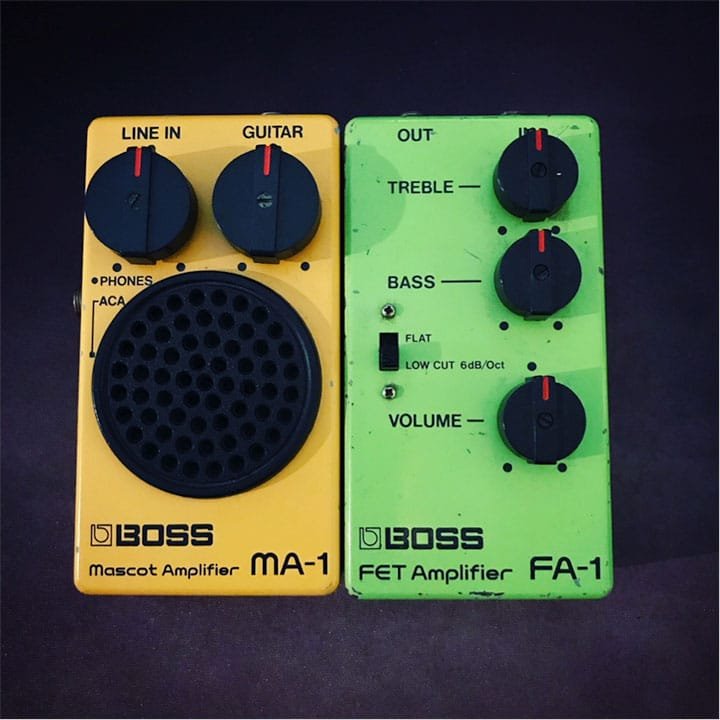
I’m actually chasing other BOSS odds and ends like retail advertising (posters, display items, etc…), BOSS swag, and commemorative pedals. I ran across the ‘10 Million Sold’ Commemorative DS-1 pedal on reverb. That might be the rarest BOSS item I have, and I found it by accident browsing Reverb.com. I also have a great BOSS poster from 1988. It lists all the pedals released up until that time.
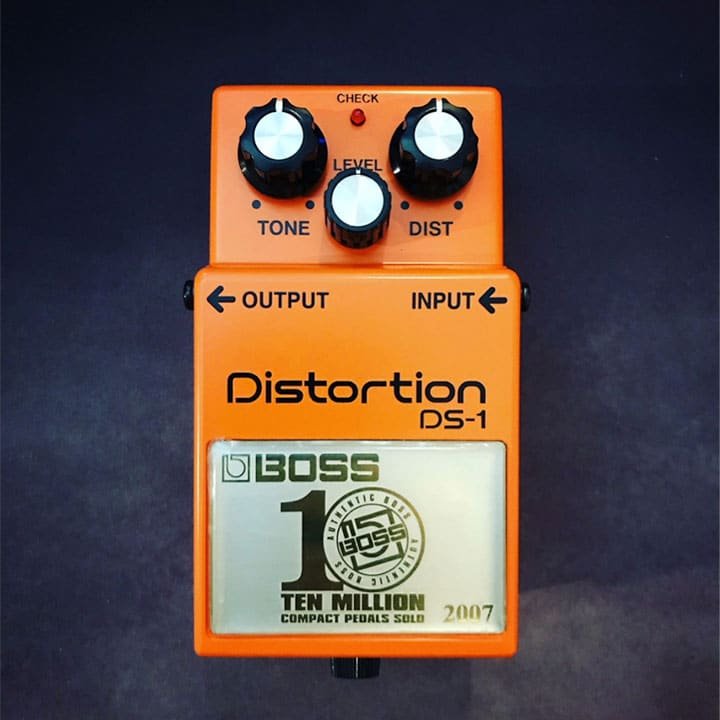
– What was it like meeting the BOSS team at Summer NAMM this year, and meeting Yoshi Ikegami (President of BOSS) himself?
Meeting the BOSS guys at NAMM was really a dream come true. It was amazing talking shop with everyone, and meeting Yoshi was great! He was so down to earth. You’d never know that he is the President of BOSS! We chatted about some of my favorite pedals, and he gave me some insight into their development. He told me I was crazy for having so many DSD-2’s. I also got to pitch my ideas for the next Waza pedals, and that was really a special moment for me.
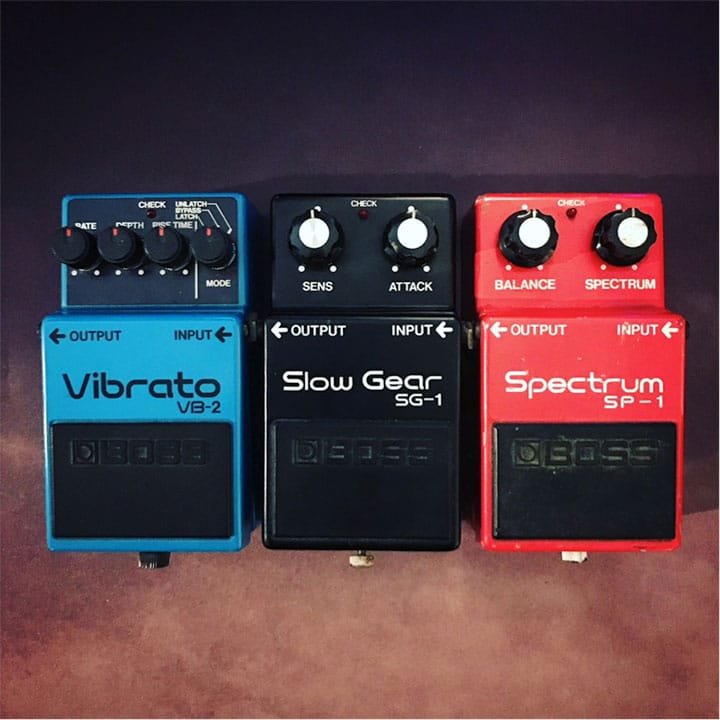
– Do you gig any of the pedals from your collection? What does your pedalboard/rig setup look like?
I do gig with some of my BOSS pedals. My board has a total of 6 pedals on it; 3 of which are BOSS. I use the TU-3W Tuner, and 2 DSD-2 Delays, in addition to a few non-Boss pedals. I like to keep it very simple live. My main gigging rig is a Marshall 2204 JMP (modified with an FX loop) and Port City cabs. The JMP is a single channel amp, so I get my OD tones by boosting the front end with a drive pedal. I have way too many amps, and I use most of the in the studio. I’m a Marshall guy, hands down. Also, my pedals get the most use in the studio. I see pedals as spices. Without them, tones can be bland and uninteresting. It’s amazing what a phaser or flanger can do if you put it in the right place in a song. For guitars, I use ESP Vipers, which are sort of like SGs on steroids.

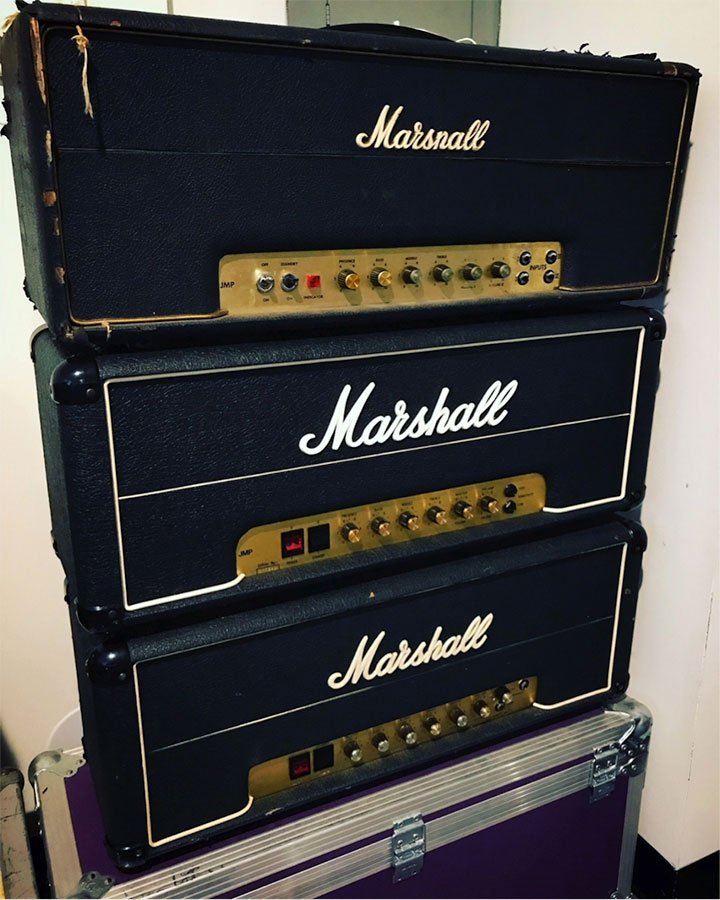
– What’s your ideal pedalboard setup if you could have ANY combination of BOSS pedals (including ones you don’t have yet)?
My ideal pedalboard would really only change with the addition of one BOSS pedal. Well, it isn’t actually a pedal yet. I’d absolutely love to have a pedal version of the BOSS FA-1 FET amp. I’d keep my board the same, and make room for a BOSS FA-1W. I’m hoping it would get the Waza Craft treatment. But like I said, I like to keep things simple for live. Maybe I’d sneak in my HM-2 and DC-2.
– What will you do the day the collection is complete?!
To be honest, my collection will never really be complete. I have learned that the journey is actually the most enjoyable part. The finish line is irrelevant to me. It keeps moving forward anyways, haha. There are always more to collect, so I just acquire the items that work for me. I also try and focus on enjoying my pedals now. In the end, they are to create music with, but they sure are cool to look at!
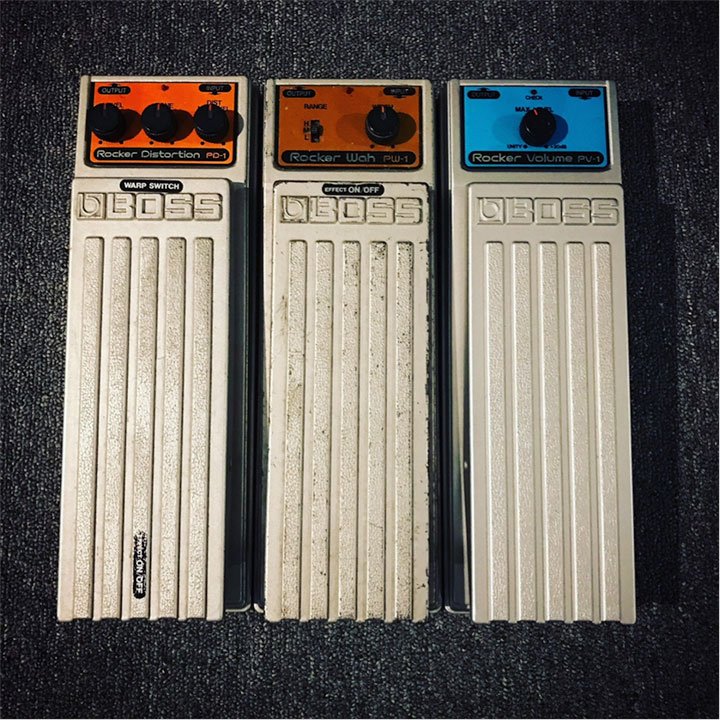
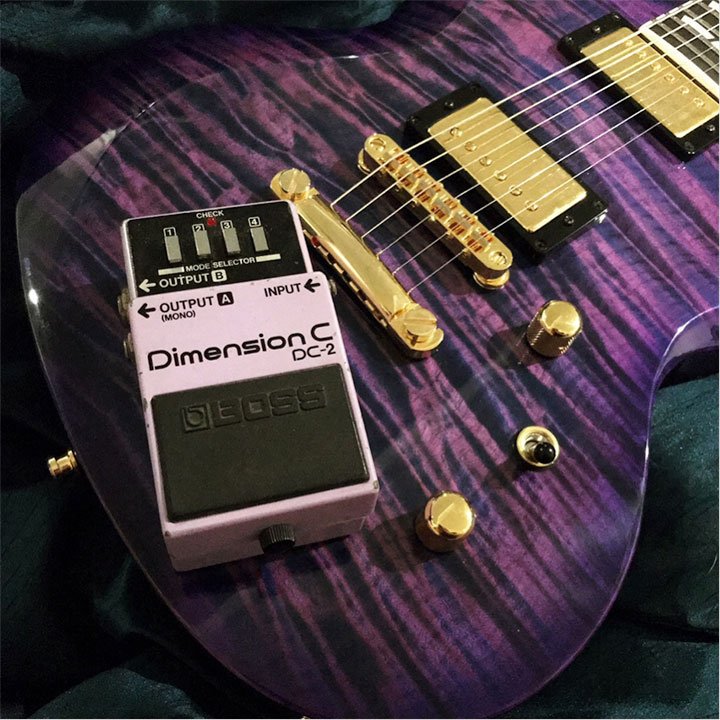
Thank you very much Mr Johnson for taking the time to talk to us for our blog! If you haven’t already, please check out the BOSS Pedal Project and associated music at the links below:
Instagram: https://www.instagram.com/boss_pedal_project/
Music (Atma Weapon): https://atmaweaponnc.bandcamp.com/
Youtube: https://www.youtube.com/channel/UCRfhFOFhymyXpNqDMczoEmw
Related Articles
Tones in Time – 50s Rock ‘n Roll
Tones in Time – 60s Rock
Tones in Time – 70s Rock


